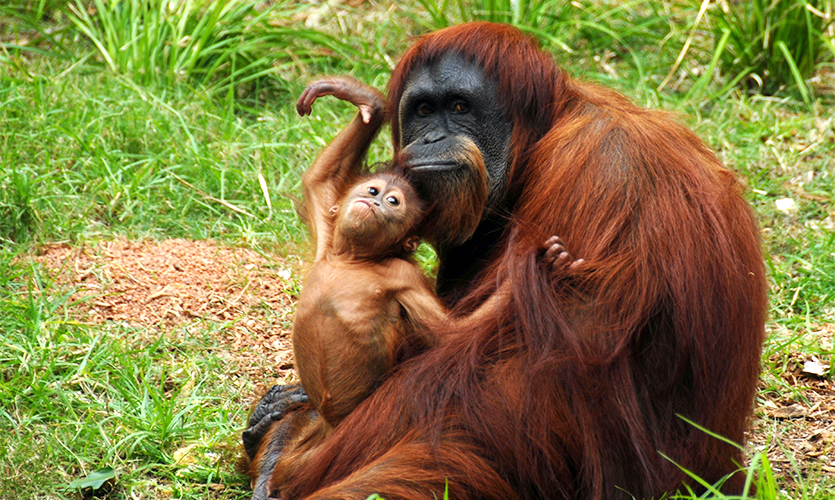Scientists discover the dawn of spoken language evolution

How did the first word evolve? Why did our ancestors combine a consonant with a vowel to make up the first word? These questions have been difficult to answer as consonant-like calls in primate evolution has been somewhat of a scientific mystery, until now.
Scientists from several institutes including Liverpool John Moores University, Durham University, and the University of Amsterdam (UvA), have found some clues to the answer in a new study published in Nature Human Behaviour.
Their research looked at orang-utan ‘kiss squeaks’.
This form of voiceless sound communication in our closest relatives, revealed it could be that consonants and vowels would have been combined in order to make a message clearer. Therefore, words would have been originally formed through repeating the same message, using different bands of frequency and fully exploiting the sound channel for a faithful broadcast of information.
So our primate ancestors would have used a consonant sound and then a vowel noise to get their point across, eventually combining the two to form a ‘word’.
Professor Serge Wich, of LJMU’s School of Natural Sciences and Psychology and the University of Amsterdam’s Institute for Biodiversity and Ecosystem Dynamics, explains:
“Our analyses show that, although depending on completely distinct production mechanics (as they do not involve the action of the voice) than vowels, great ape consonant-like calls can transmit a suite of information about who, where and when a call was transmitted. If early consonants conveyed similar information as vowels, than it is unlikely that they were originally combined for adding detail to a message.
“If we assume similar evolutionary forces acting on orangutans as those that acted upon human ancestors, it is highly likely that proto-consonants and proto-vowels were combined to generate the first syllable or word as a message repetition, transmitting the same bit of info via the acoustic channel but via two different bands.”
Dr. Adriano Lameira, the lead author of the study and based at Durham University’s Department of Anthropology, said:
“The recent discovery that great apes produce two major call categories – voiced and unvoiced – that show close affinities with human vowels and consonants, respectively, is allowing great ape researchers and scientists interested in spoken language evolution to advance new types of questions on this long-standing puzzle.
“Indeed, in light of the most recent findings in our closest relatives, we are now learning to know how to raise pertinent questions about speech evolution, seemingly obvious ones, but that no one had seriously address yet, such as, why did the first words evolve? Thinking about the moment in language evolution when consonants and vowels became inseparable sets up the stage, in turn, for new questions. Ultimately, we hope to be able to reconstruct speech evolution; to know the basic building blocks and how to put them together and in what order.”
You can hear the orang-utan kiss squeak here
BBC News reported on the research across national radio, including BBC Radio 4’s Today programme (highlights at 3 mins 29) and BBC online - Orangutan squeaks reveal language evolution, says study. The Telegraph also featured Professor Wich explaining that the finding was interesting because researchers had previously assumed that that amount of information would not be available in a consonant.


